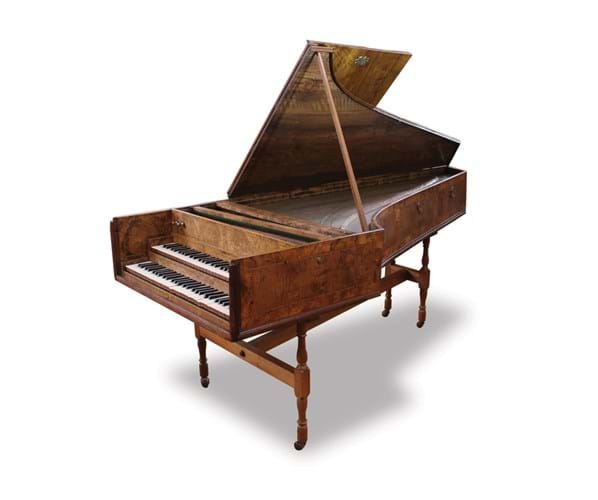The double-manual harpsichord by London maker Joseph Mahoon (1696-1773) had been temporarily blocked from export by Michael Ellis, minister for arts, heritage and tourism, following a recommendation by the Reviewing Committee on the Export of Works of Art and Objects of Cultural Interest (RCEWA).
The RCEWA said the instrument is “closely connected with British history and national life, and is of outstanding significance for the study of music, musical instrument making and the history of performance”.
Gainsborough’s House museum in Sudbury, Suffolk, is the birthplace of artist Thomas Gainsborough (1727-88). He is known to have had a great passion for music and owned a harpsichord.
“Centrepiece”
Mark Bills, director of Gainsborough's House, said: “This acquisition not only saves for the nation an important cultural object from the age of Gainsborough but provides a centrepiece for the artist's childhood home and the focus for the exploration of the musical world that he was so passionate about.”
The museum, with help from the National Heritage Memorial Fund, the Art Fund and the V&A Purchase Fund, matched the £85,560 price that the US buyer had paid at auction (including fees).
The harpsichord was the top lot in the The Colt Clavier Collection of historic and important keyboard instruments offered at the Kent saleroom in June 2018. The collection, one of the largest of its type in the country, was started in 1944 by Charles F Colt (1911-85), whose family fortune was made producing prefabricated timber houses.
The oak-cased with walnut veneer instrument was made in London in 1738 and is one of only two surviving British harpsichords by Mahoon made between 1730-39 and the only double-manual variety known.
Mahoon was born in Exeter and may have been apprenticed to the London harpsichord maker Benjamin Slade. Mahoon was appointed ‘Harpsichord Maker to his Majestie’ George II in 1729.






